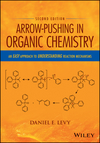- Why have I not utilized green chemistry?
- What I contribute to this discussion?
- How I can incorporate green chemistry into my department?
- It is better to prevent waste than to treat or clean up waste after it is formed.
- Synthetic methods should be designed to maximize the incorporation of all materials used in the process into the final product.
- Wherever practicable, synthetic methodologies should be designed to use and generate substances that possess little or no toxicity to human health and the environment.
- Chemical products should be designed to preserve efficacy of function while reducing toxicity.
- The use of auxiliary substances (e.g. solvents, separation agents, etc.) should be made unnecessary wherever possible and, innocuous when used.
- Energy requirements should be recognized for their environmental and economic impacts and should be minimized. Synthetic methods should be conducted at ambient temperature and pressure.
- A raw material or feedstock should be renewable rather than depleting wherever technically and economically practicable.
- Reduce derivatives - Unnecessary derivatization (blocking group, protection/deprotection, temporary modification) should be avoided whenever possible.
- Catalytic reagents (as selective as possible) are superior to stoichiometric reagents.
- Chemical products should be designed so that at the end of their function they do not persist in the environment and break down into innocuous degradation products.
- Analytical methodologies need to be further developed to allow for real-time, in-process monitoring and control prior to the formation of hazardous substances.
- Substances and the form of a substance used in a chemical process should be chosen to minimize potential for chemical accidents, including releases, explosions, and fires.
Adapting Green Chemistry to Discovery Research
One of the most intriguing areas of green chemistry involves the use of chemical reactions that conserve atoms - that is, all atoms in reactants and reagents are incorporated into the reaction product. While, in principle, this philosophy reduces waste, in practice, such chemistry is not available in a diverse enough toolbox to allow for the synthesis of compounds with structural diversity necessary for success in drug discovery.
Compare green chemistry to the promise advertised for combinatorial chemistry. Combinatorial chemistry utilizes polymer supports on which reactions can be executed. However, the diversity of reactions compatible with the polymers limited the applicability of solid-phase chemistry to a subset of pharmaceutically interesting molecular scaffolds. Thus, while combinatorial chemistry is a useful tool for some structural classes, this technique is currently not the answer to the rapid discovery of novel drug candidates. This may, one day, change with a large enough toolbox of reactions that can be utilized on various types of polymer supports.
From another perspective, consider that the definition of green chemistry relates to the design of products that minimize the use and generation of hazardous substances. If we, in the pharmaceutical industry, were to design our target structures with waste streams in mind, we would be limited in the types of reagents we could use and we would certainly not have access to the diversity of structures necessary to succeed. While, at first glance, this reality might lead one to believe that green chemistry is not applicable to discovery research, the first of the 12 principles reverses that perception. In the execution of research activities, waste is generated - the vast majority being solvent waste. Some strategies for solvent waste reduction are:
- responsible execution of reactions utilizing minimal amounts of solvents
- non-use of environmentally toxic solvents such as carbon tetrachloride and benzene
- replacement of column chromatography with recrystallization techniques whenever possible
- using supercritical carbon dioxide as an HPLC solvent
- segregation of waste solvents and solvent recovery through distillation
Through incorporation of these techniques, coupled with efficient containment of waste streams, discovery research can be environmentally friendly. Furthermore, upon reflecting on these philosophies, I feel justified in saying that:
- I daily utilize green chemistry through maximizing reaction concentrations and minimizing solvent use.
- I routinely incorporate green chemistry into my department through efforts to minimize and contain waste streams.
- I have a great deal to contribute to this ongoing philosophy through advocacy in favor of environmentally friendly practices.





http://www.youtube.com/watch?v=7TY9womdTz8
ReplyDeleteIf utilized well, green chemistry can be effective in processing products that are less hazardous than products with high chemical substances. I think a lot of countries today are practicing this kind of principle to be able to help out the environment. Near infrared devices are used for advance measurements of materials in making products that are less toxic and is very safe to use.
ReplyDeleteGreetings! Did you make all the settings of your site all by yourself or you got professional help?
ReplyDelete